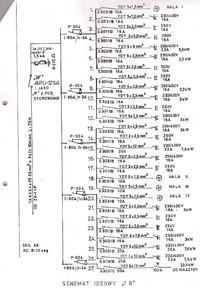Hello
I have a question, what are the rules for selecting fuses, for which receivers B is selected and for which C? I mean single and three-phase current;
my second question is about differentials, when do we use a 30mA differential and when a 300mA differential?
the questions arise from my doubts about the electrical design for the carpentry shop made by the designer;
eg there is a saw with a 5.5KW motor, the designer selected the fuse B16 and the differential 80A 300mA; while in the saw's documentation it is written that the protection should be class C with a value of 20A;
and who is right?
and one more question what fuse should be chosen for a machine with a total power of about 17KW? (5 motors, 3,3,4,4,3 KW - all star-delta starting);
I have a question, what are the rules for selecting fuses, for which receivers B is selected and for which C? I mean single and three-phase current;
my second question is about differentials, when do we use a 30mA differential and when a 300mA differential?
the questions arise from my doubts about the electrical design for the carpentry shop made by the designer;
eg there is a saw with a 5.5KW motor, the designer selected the fuse B16 and the differential 80A 300mA; while in the saw's documentation it is written that the protection should be class C with a value of 20A;
and who is right?
and one more question what fuse should be chosen for a machine with a total power of about 17KW? (5 motors, 3,3,4,4,3 KW - all star-delta starting);





